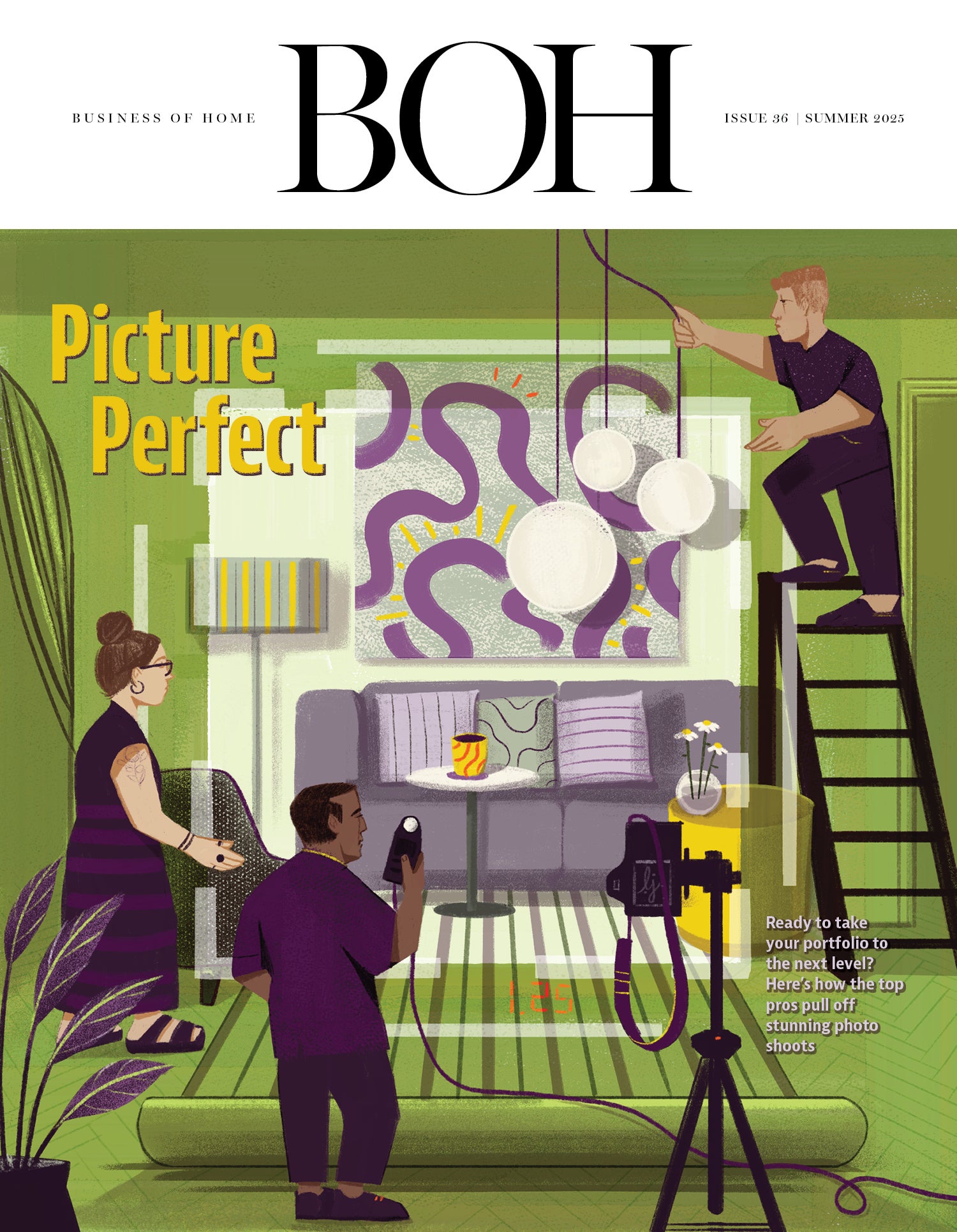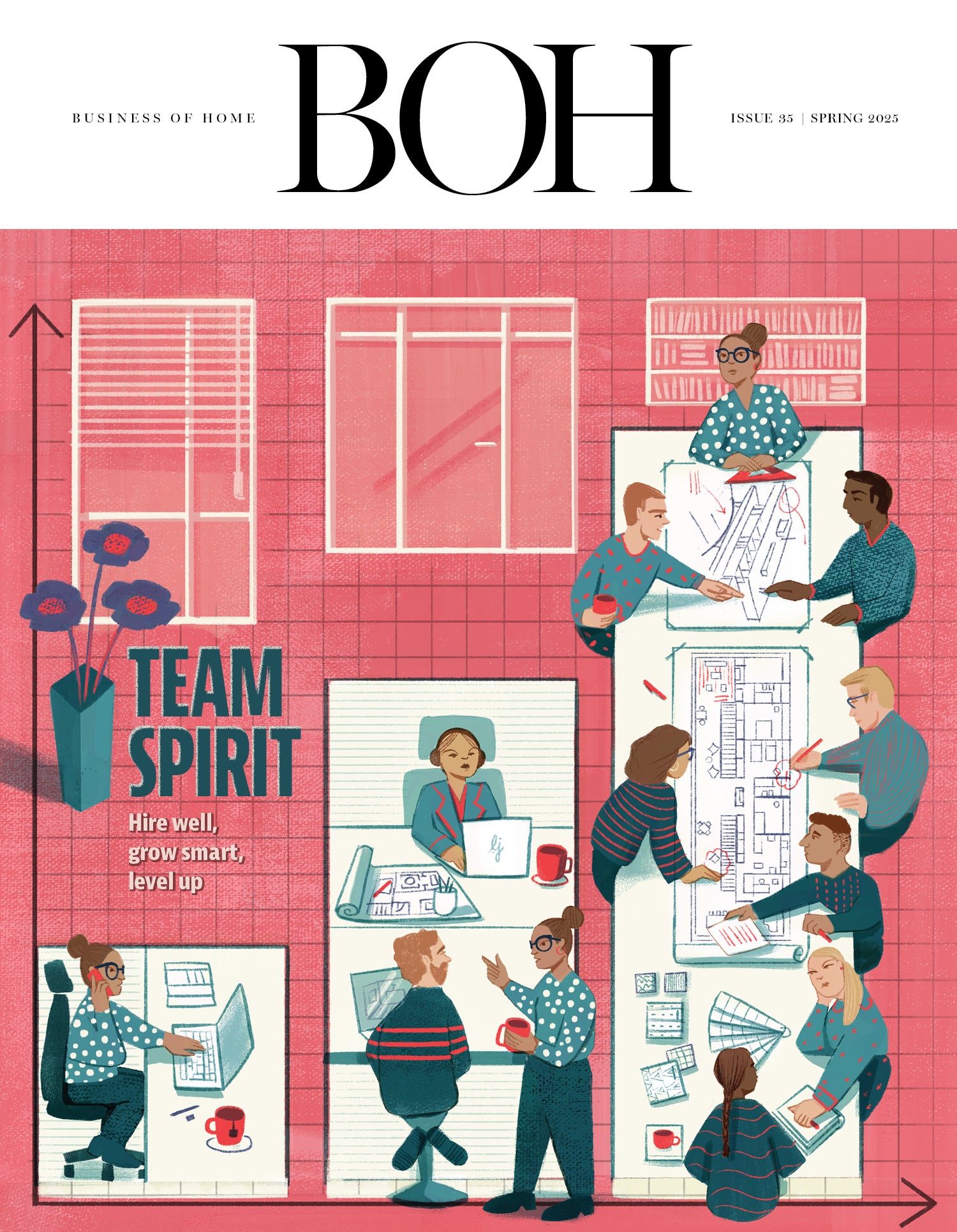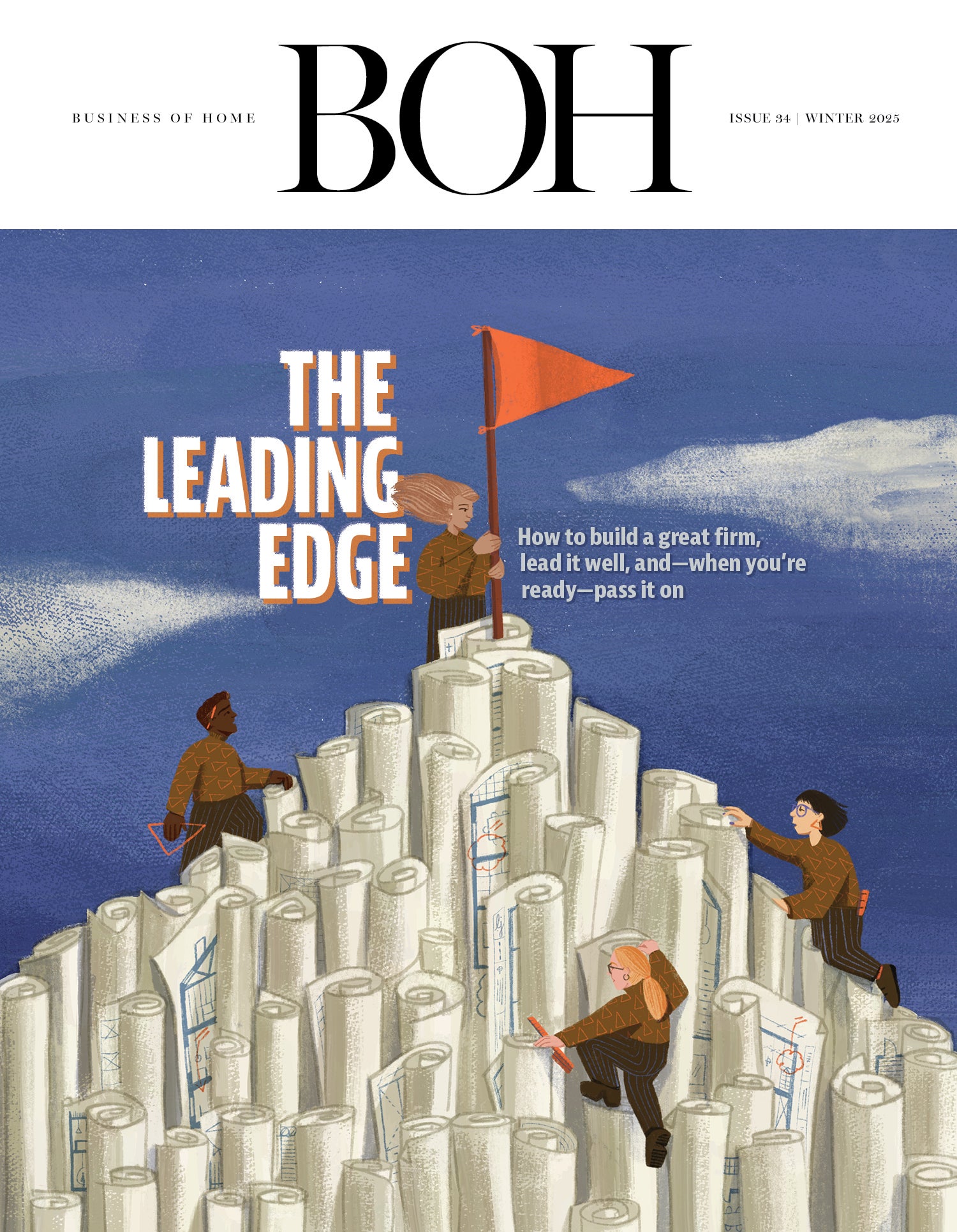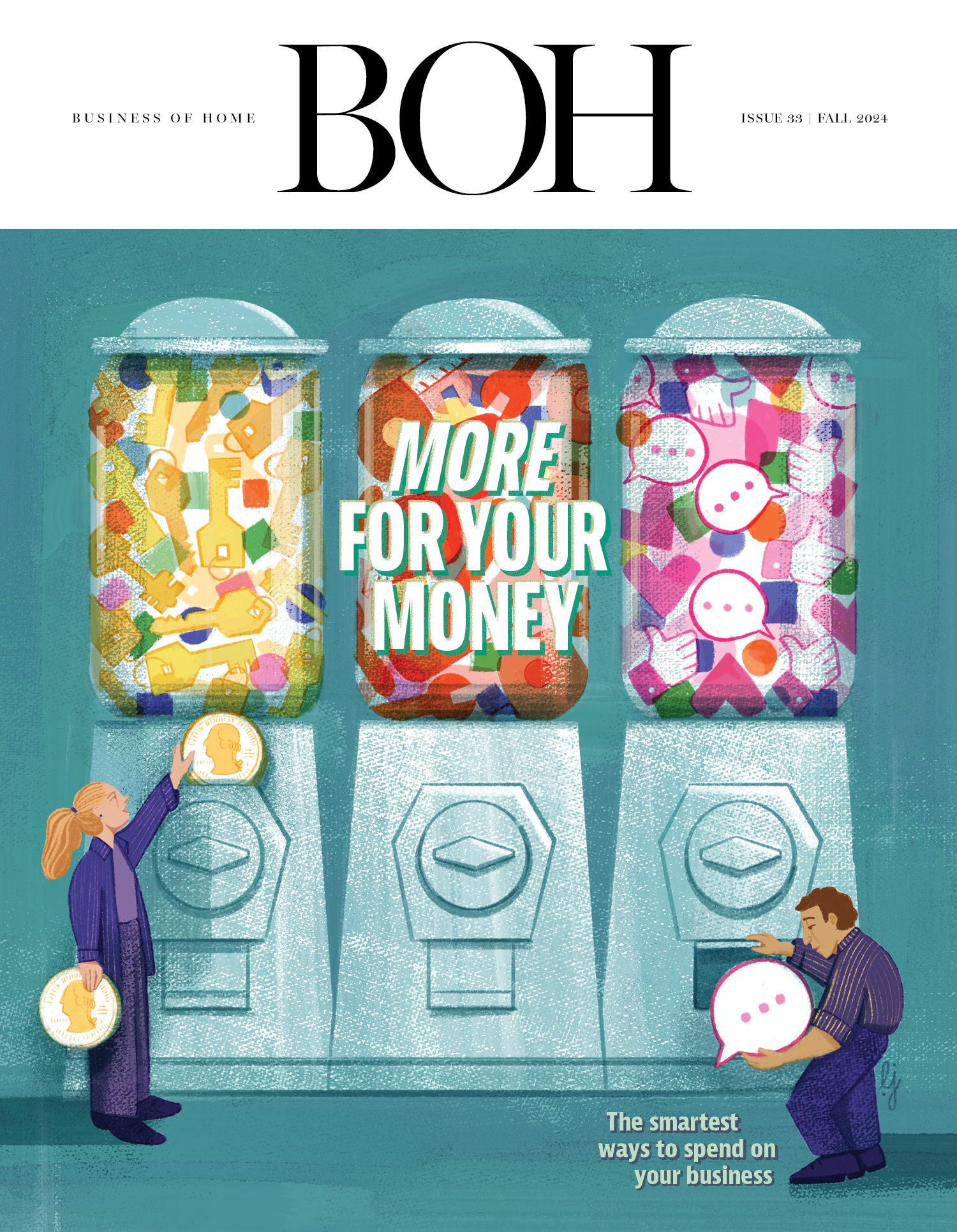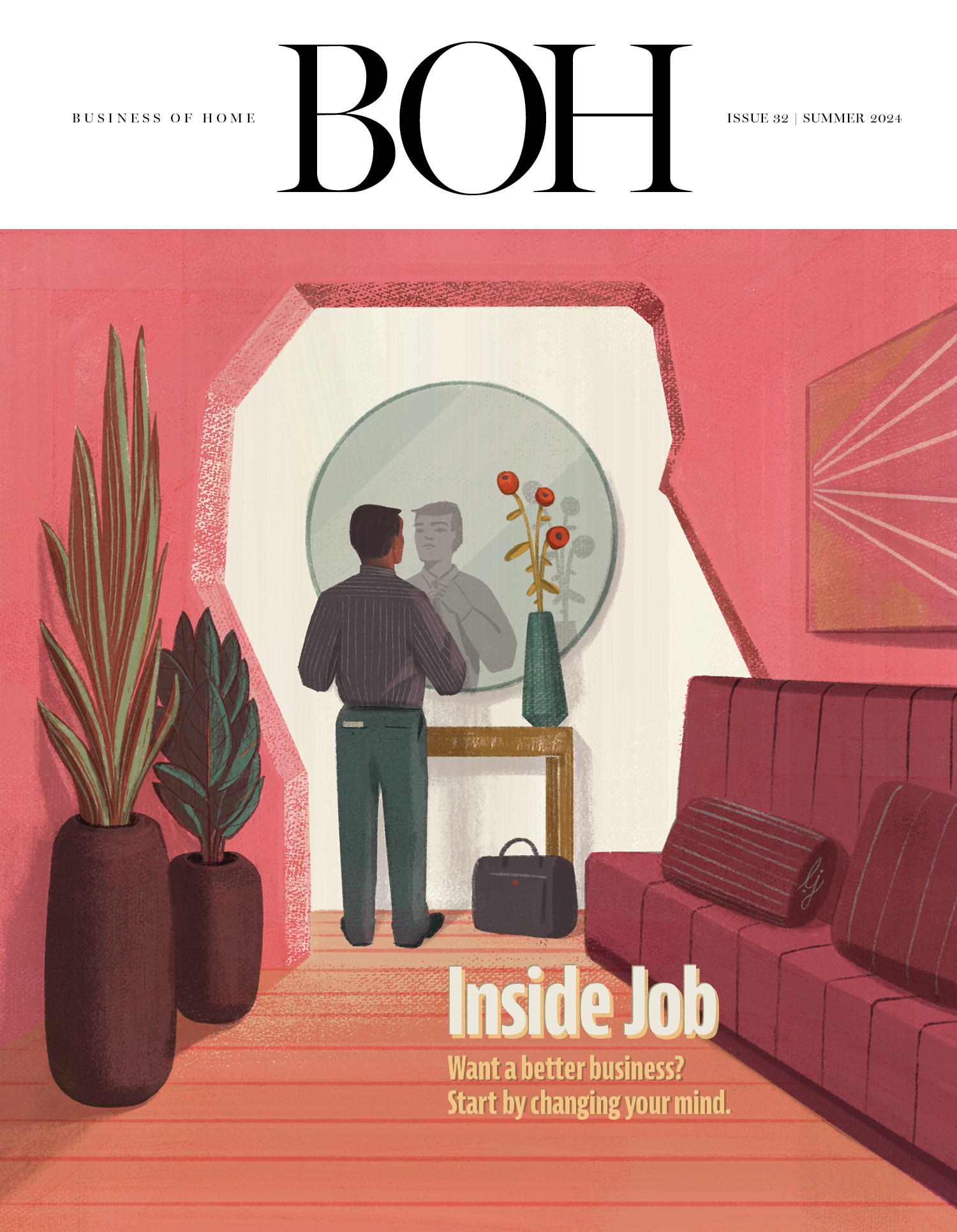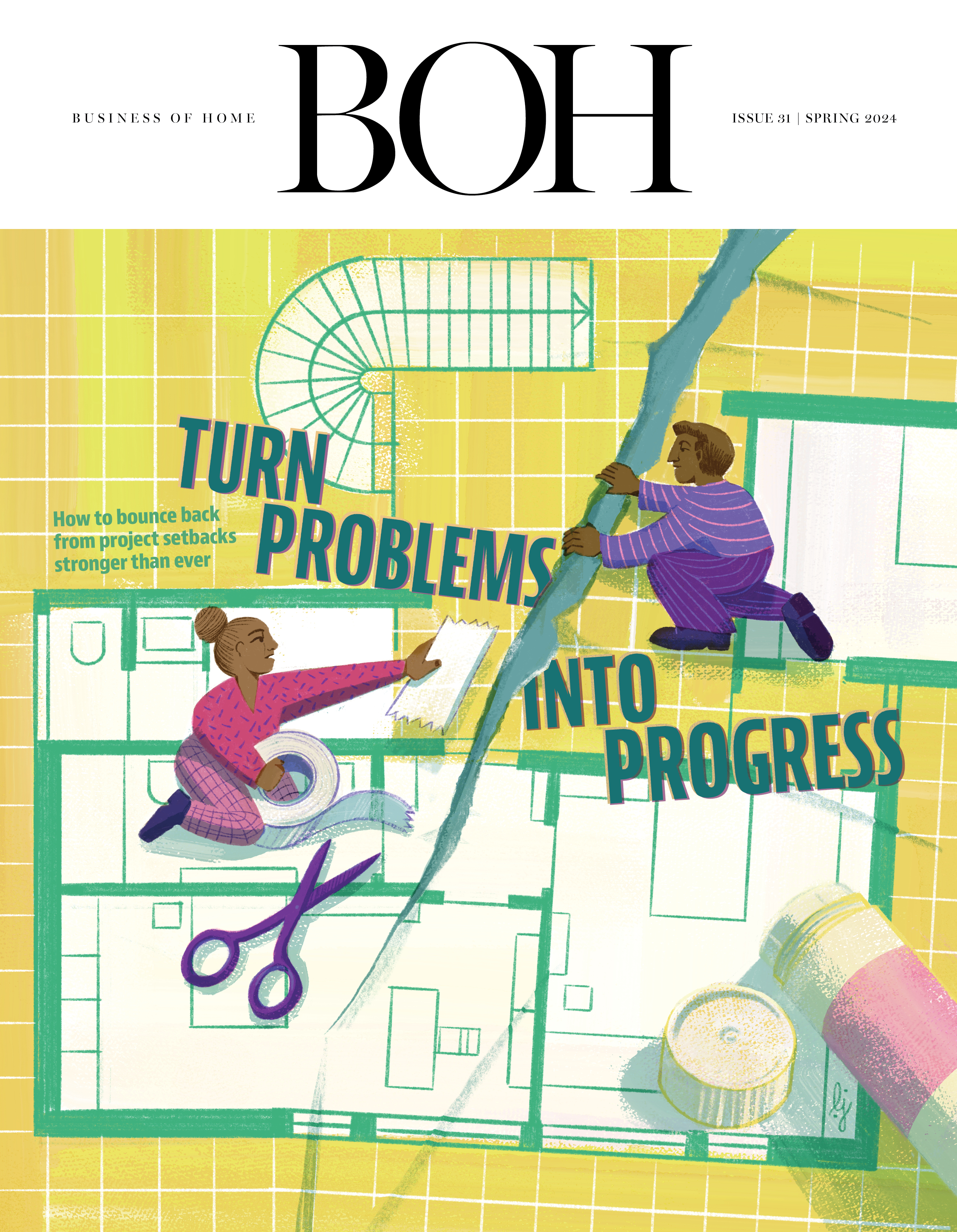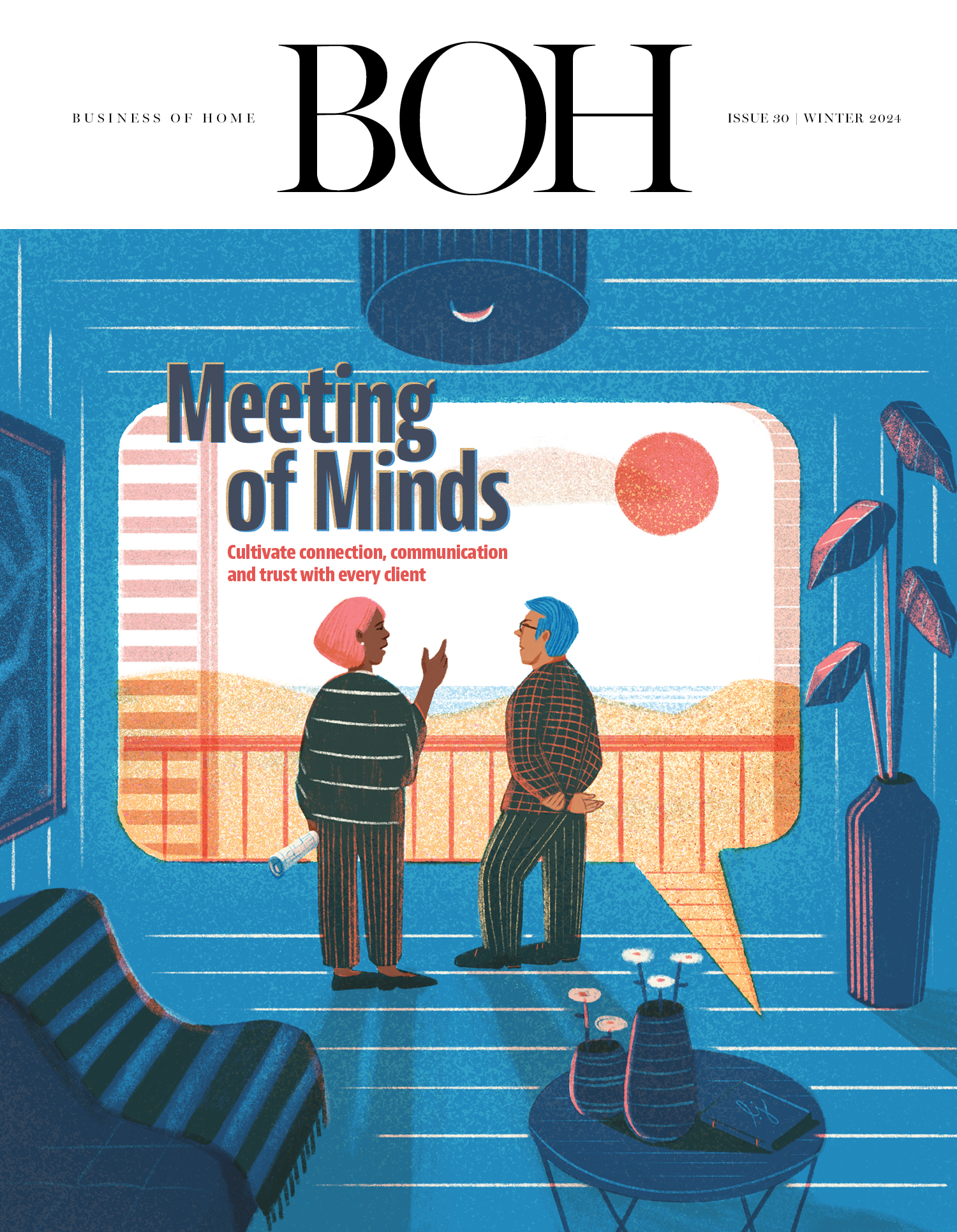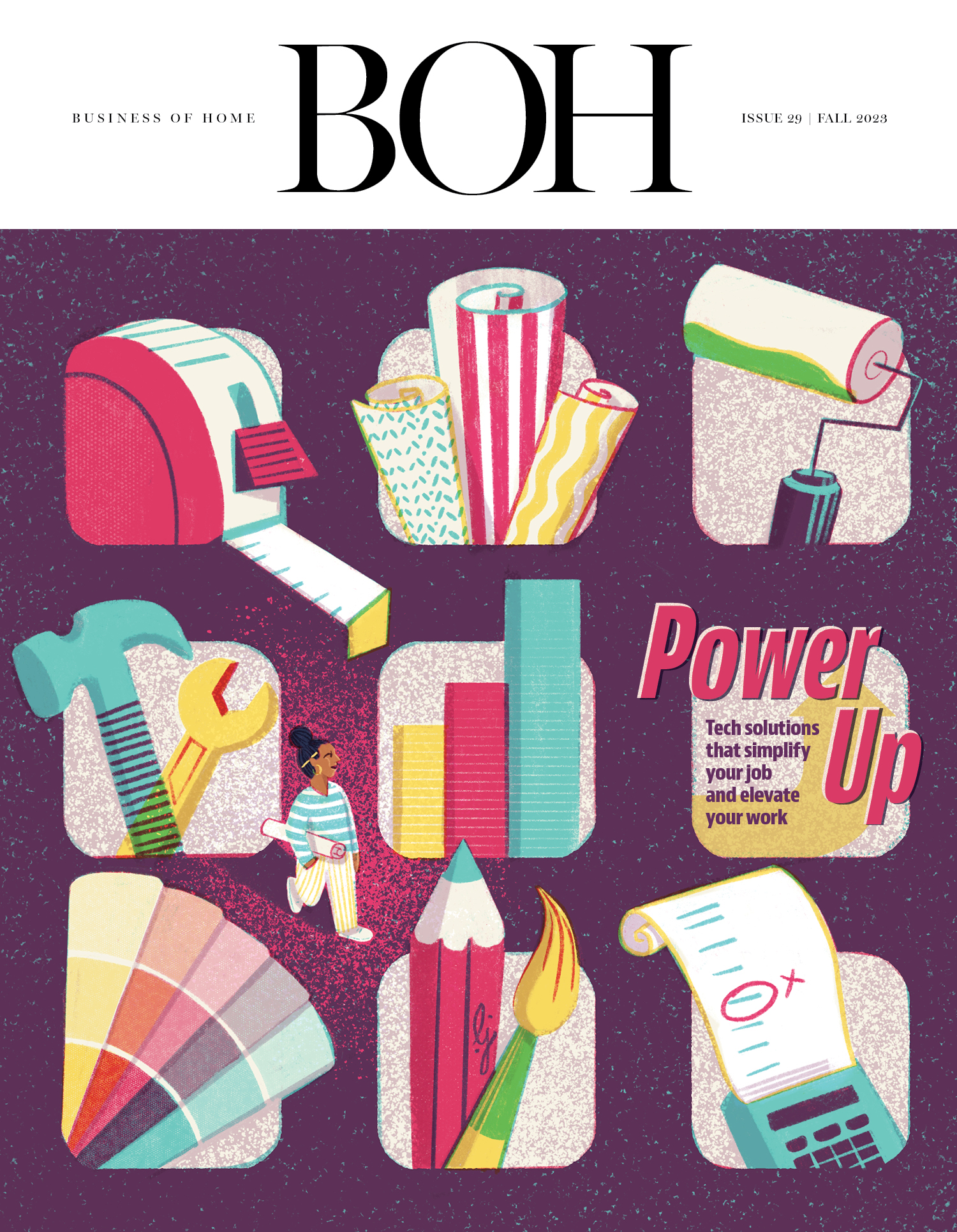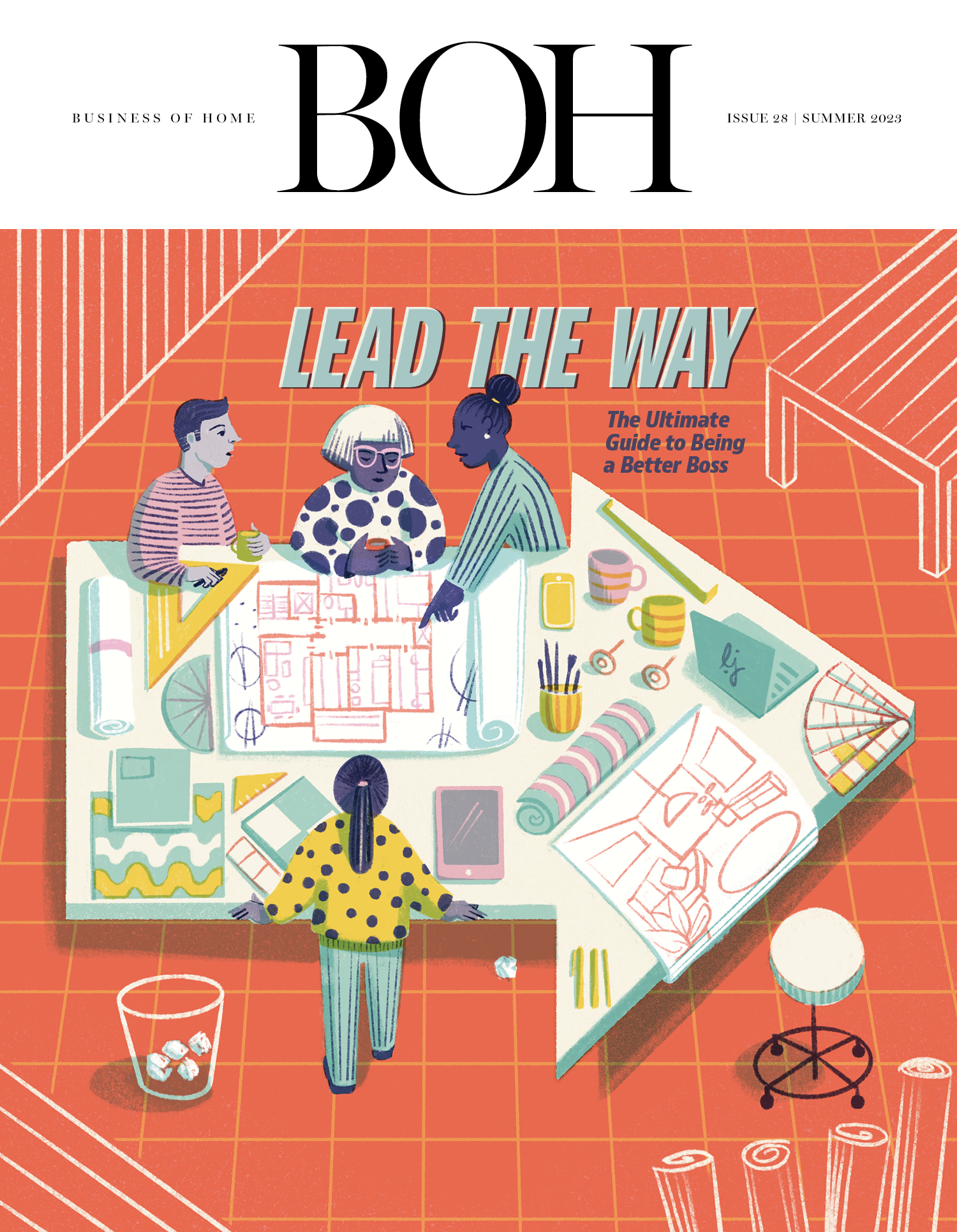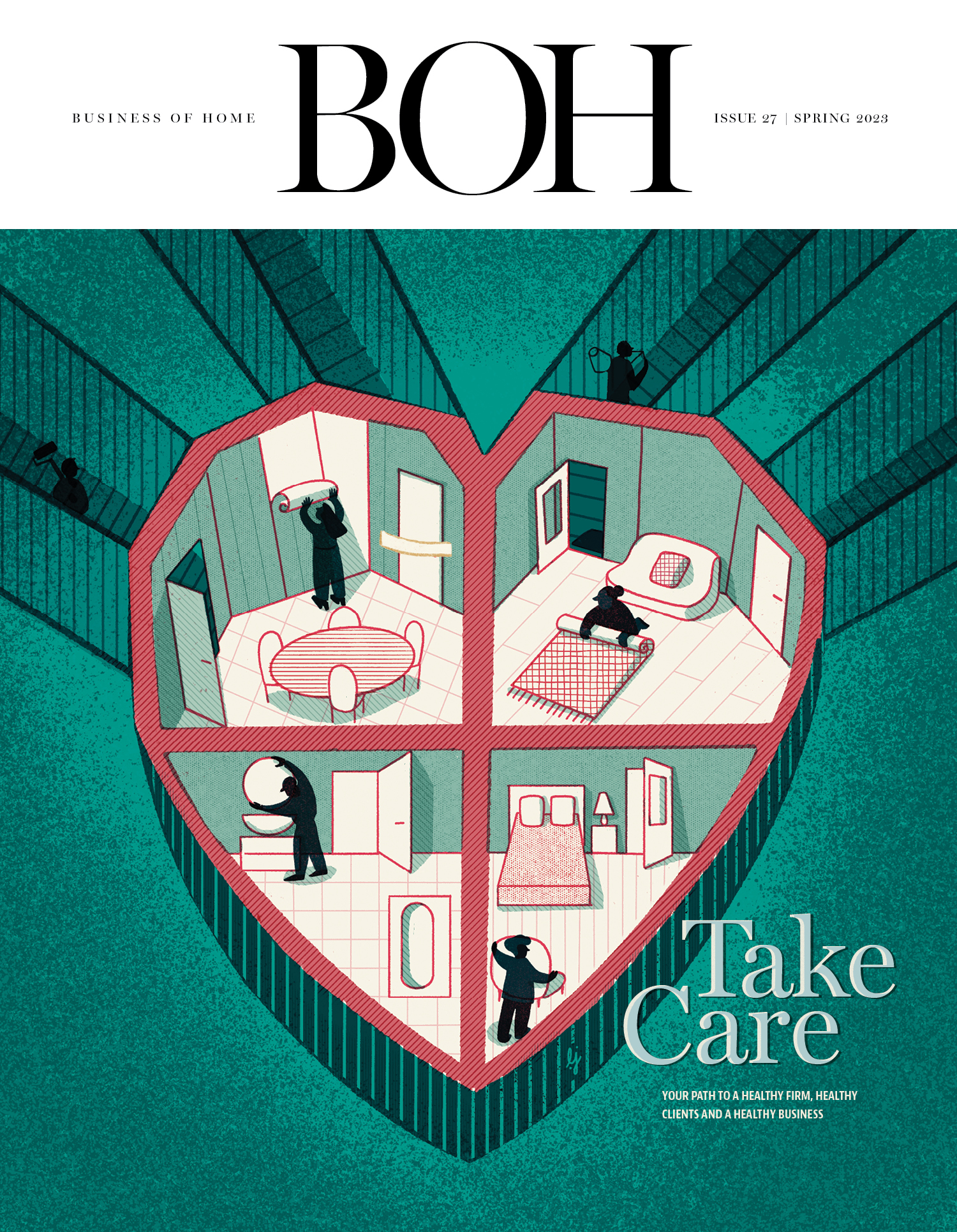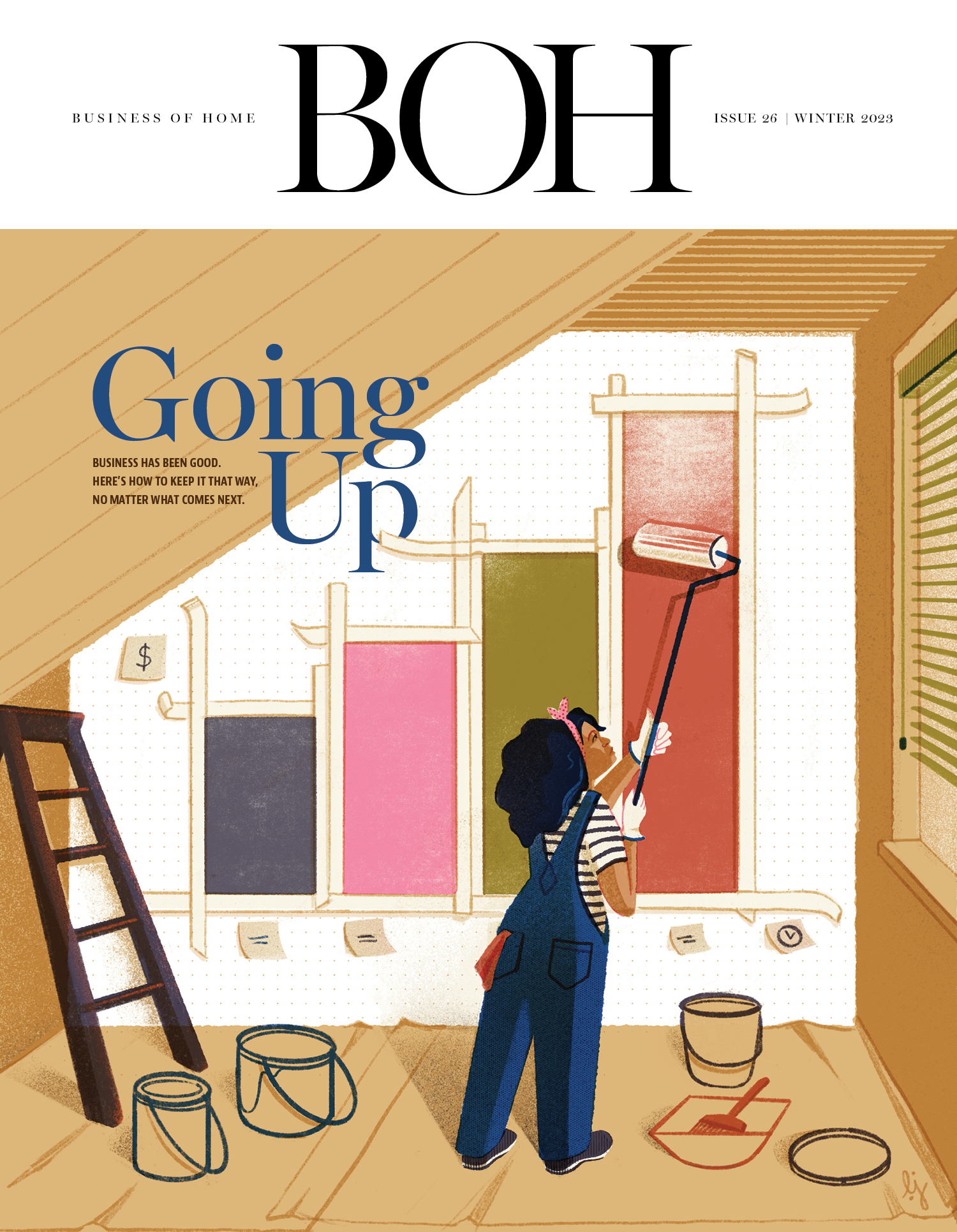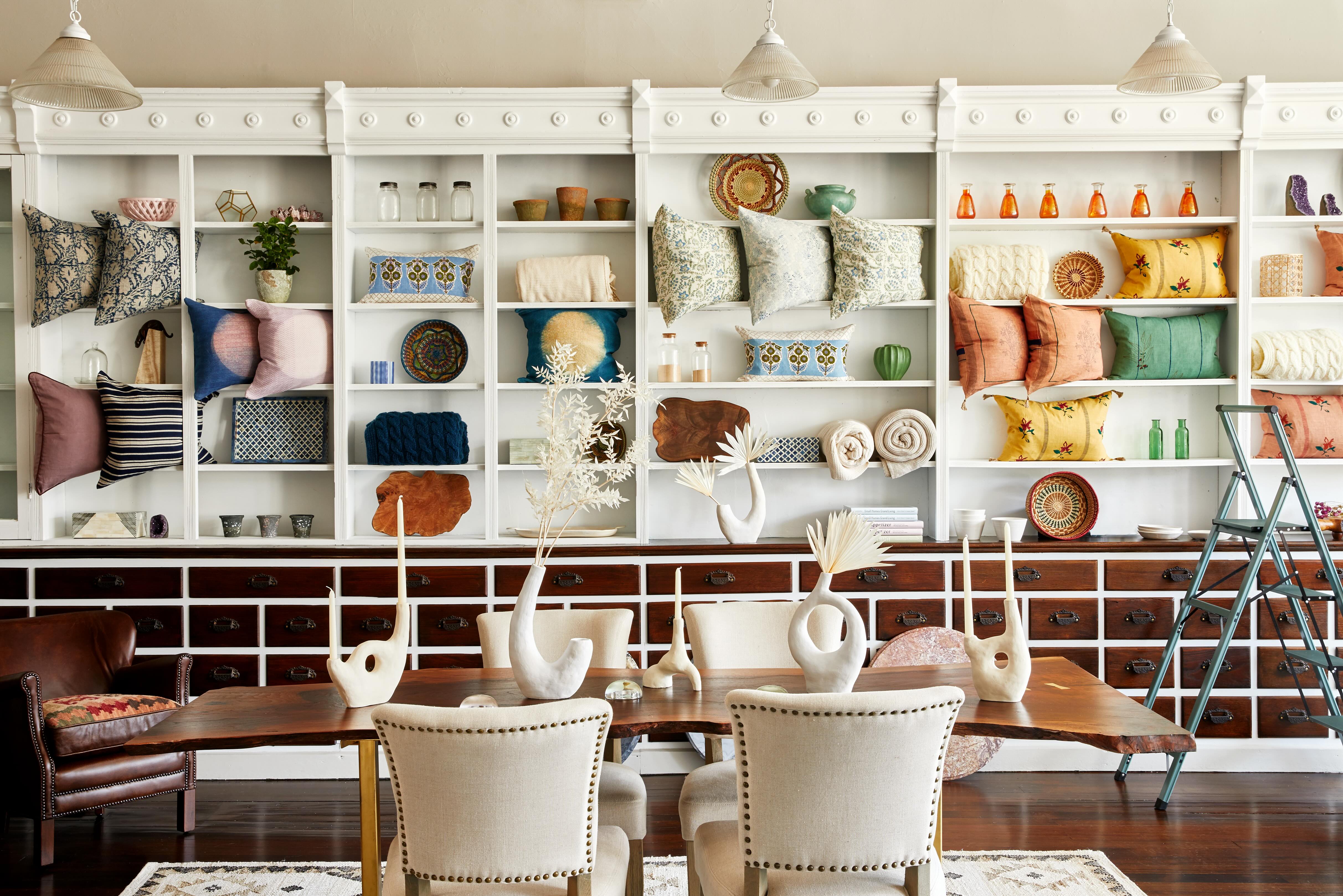In Business of Home’s series Shop Talk, we chat with owners of home furnishings stores across the country to hear about their hard-won lessons and challenges, big and small. This week, we spoke with Kimberly Bevan, owner of Bevan Interiors and Briar, a store in the western Catskills town of Andes, New York.
With the fifth anniversary of the Month That Changed Everything—that would be March 2020—approaching, Bevan is a perfect professional to chat with, as she’s one of the many folks who upended their entire lives when the pandemic struck. Ahead, she talks about how she came across the stunning building that inspired her complete pivot, why the English countryside finds its way into her work, and the utter idyll the region continues to offer her and her family.
What was your career like before the shop?
I was a design director for a large design firm, heading up a 30-person New York office. We focused on resort design around the world. I did that for about seven years, and then I was really ready for a change. It happened during the pandemic. I had been very used to traveling a lot for work, and I didn’t know I wanted a store, but I knew I wanted to launch my own design firm eventually. When I found the building in the Catskills, it gave me this venue to launch a shop, and from there, grow my independent design business.
Where in the city were you living, and what was your relationship to the Catskills at the time?
I was living in Brooklyn, and my office was in Flatiron. I was 100 percent New York City–based and had no prior knowledge of the Catskills. I don’t think I had even really visited, other than maybe a ski trip once or twice. During the pandemic, I was in a studio apartment and I was craving more space. I got in the car and just started driving, and came across the town of Andes in the western Catskills, which is a bit off the beaten path. I was more familiar with east of the Hudson, but as I kept driving west, it just got more and more beautiful. It’s so bucolic in that neck of the woods. Honestly, I instantly fell in love.
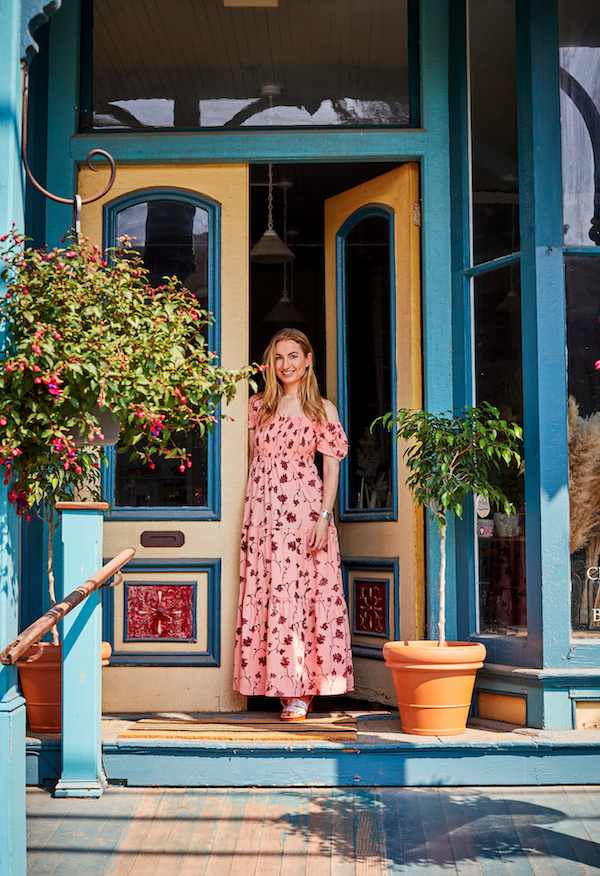
Do you live there now?
I did—I lived above the shop full-time for about two years. Then I met my husband, got married, had a baby, and we are now primarily [back] in New York. We do get to the store and our apartment above it at least once a month, but I have help now running the shop as we’re scaling up.
Tell me about finding the space. What was it originally?
During that initial visit exploring the Catskills when I came across Andes, I saw this tall Victorian building as I drove down the main street. At the time, it was painted several different shades of yellow and blue, so it really stood out. I noticed there was a little handwritten sign, “For sale by owner,” and I inquired. She had already accepted an offer, so I was more curious about this beautiful building and getting a tour. When that sale fell through and the owner reached out, I had already gone back to Brooklyn, but I couldn’t stop thinking about this building.
It was a store called Paisley’s Country Gallery, and it had been in business for 25 or 30 years—a collection of the previous owners’ finds from their travels, so a lot of tapestry and sarong-type pieces, woven baskets and turquoise jewelry. The shop level was chockablock full of treasures, and you couldn’t see the cabinetry that was hidden beneath. But as an interior designer, when I had that initial tour, I was peeking behind the tapestries and realizing that the bones were really incredible. Originally, the building was a general store, then an apothecary, and all of that shelving hidden behind the textiles was original from the 1890s—all of the little drawers were still intact, with the little cup pulls and medicine labels. The fact that there was an apartment upstairs got my wheels turning. I realized this could give me a venue to become known as an interior designer on my own and get my name out there.
How did you find the courage to start multiple new careers at once?
I really had a vision. My parents, though they were very supportive, thought I was a little nuts for biting off so many new endeavors at once. It was not something I had been saving for financially. It wasn’t something I had planned for. It was really a result of this moment during the pandemic where I was just like: I need change. I was born in a small rural town in England, and that countryside setting has always stayed with me. So there was something about being cooped up in my studio during the pandemic—it was like a guttural reaction, and I needed to get back to the countryside. I was thinking, “Oh, maybe I’ll look for a house on 10 acres of land.” When I found this building, this vision came to me.
When I feel adamant about something, I am very determined to make it work, so I had no fear going into it. It was just: This is what I’m going to do. It’s going to be great. I felt strongly that it was the right path for me. I just figured it out one step at a time, working toward this vision. Once I was there, I met local carpenters and upholsterers and the right people to make it happen. There were a lot of like-minded people who had left the city at the same time. I lucked out.
How did you go about sourcing?
I traveled a ton for work prior to opening the store, so I had a treasure chest of sources and items—vendors I loved and had kept in touch with from my travels and from trade shows. I just reached out to everybody who made items that I had always admired. I also forged relationships with local artisans, woodworkers and weavers. It’s continuously evolving. If I go to a new place, I usually bring back a couple of new items or new vendors with me. It’s changing season to season at Briar.
What’s the general aesthetic of the store? Is there a category you’re known for?
The common thread is either small-batch production—nothing in the store is mass-produced—typically handmade, and if it’s not local, it’s imported via fair trade. We know the story behind every piece. It’s pillows for your sofa through to organic, handmade products for yourself. We work with a lot of artisans who forage for local materials to make beautiful hand creams and body washes, so there’s a self-care element. Everything is quite different if you look at it side by side, but the commonality is small-batch, locally made, fair trade, and we try to be very sustainable in all of our sourcing and business practices.
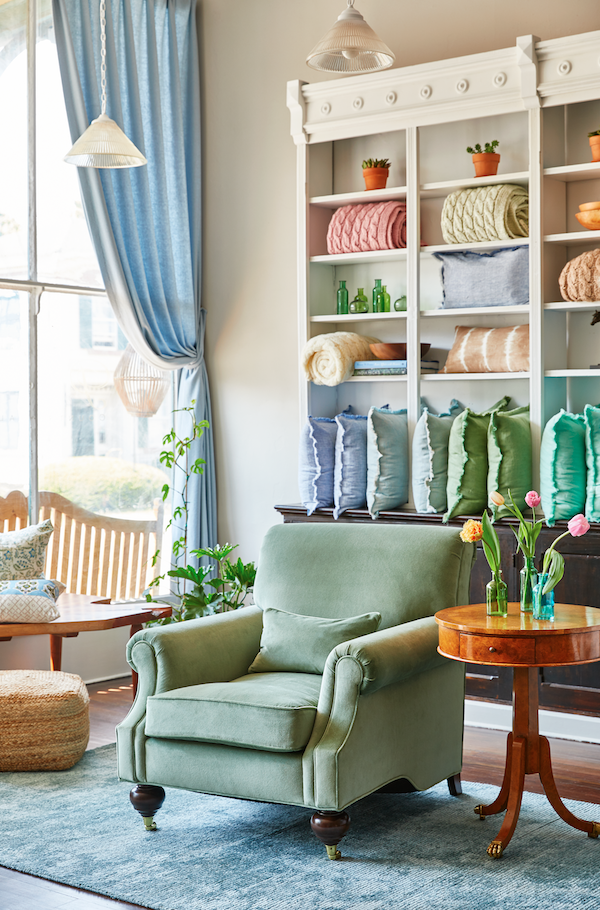
Can you tell me about a particular vendor you love?
One woman I met at a farmers market in town, she hand-looms textiles. She sells them as dish towels, but I use them for everything, including as scarves sometimes. It’s La Pequeña, and she’s local. She has the most gorgeous use of colors.
A piece I’ve sourced from further away—on my honeymoon in Tuscany, we found somebody who handmade leather marbled notebooks and picture albums. They were based just outside of Montepulciano, and I’m not even sure if they have a company name!
Is there a category or specific product that flies off the shelves for you?
Our pillows from Soil to Studio. They’re all hand-blocked in India and change seasonally. Those are great sellers. The patterns are beautiful. And our Hudson Made products fly off the shelves, another local company with ingredients grown locally. They have just three scents within their collection, and they’re beautiful and all-natural. They do hand soap, hand lotion, body wash, a shaving collection for men, and this calendula oil that you can use all over. That just flies.
What about your own favorite category?
We have these hand-carved, life-size wooden sheep upholstered in sheared wool. So we have baby lambs in the shop, and some are grazing, some are looking out the window. They’re in different positions, and they can double as playful statues in the home, or footstools, or another place to sit, or something for a child to play on. I just love them. I’ve used them in a few of my projects and they add so much personality to a room.
Tell me a bit more about the English countryside element.
It’s definitely stayed with me in my personal aesthetic. I’m obsessed with florals. If I can put a floral on a floral on a floral, I will. I grew up with a chintz sofa and floral pillows and floral curtains, and that really speaks to me. You’ll see that element at Briar for sure, as well as in my apartment above the shop. And then it’s color, texture, coziness—these are elements in Briar and all of my work. We have fuzzy sheared sheepskins and handwoven blankets and a use of warm colors. We have a wood-burning stove in Briar, which is very cozy. It can get very cold in the western Catskills, so it’s often burning. And then just working with artisans and using organic materials, natural woods—the hand-carved wooden bowls—feels very familiar to me from my roots.
What’s the design community of the Catskills like, and how did it feel to be a part of that explosion in the pandemic?
It was a very cool time to be in the Catskills. Andes was primarily known for dairy farming, and a lot of the full-time residents were farmers. I think the town population right before Covid was in the 800s or 900s. It really expanded during Covid, when you had these city expats finding a second home, or a home away from home. I think it was a very creative time for the Catskills. Andes in particular has always drawn a creative crowd, even prior to the pandemic; a lot of artists and artisans there have lived there for their whole lives. But the pandemic definitely breathed fresh life into the town. People really collaborated, the farmers markets were thriving, and the local farmers were getting together with the new school—pie makers and weavers—and it created this incredible patchwork. I feel very fortunate to have moved there during that time, because the town was buzzing. When you looked out the door, it felt like you were in the heart of Williamsburg. I met pretty much all the Bevan Interiors clients I have today from walking through the doors of Briar. It was an amazing way to meet friends who turned into clients and vice versa.
I really feel that design was lacking in the Catskills before the pandemic. If you had said there was an interior designer with a home goods store in Andes a few years ago—I mean, I think there were elements of that, for sure, because of the creativity, but the time would not have been right to open Briar until the pandemic. It’s become more and more of this little design haven. Around the same time, an art gallery opened right next door, an incredible bakery and cafe opened across the street, and an amazing bookstore relocated from Brooklyn to catty-corner to Briar. I was in very good company with people who were creating this country offshoot of what they had in the city.
How have you gone about staffing, especially now that you are not there all the time and need to really trust your team?
It’s gone through a few iterations. At first, I was really reluctant to hand over the position of shopkeeper; I felt like I met everybody in town that way, and my store is such a reflection of me. But to kick things off, my cousin Katie moved here from Oregon. Her family owns a Christmas tree farm there, and she was free in the off-season, so she came and ran my shop for me. She did an incredible job; she really embraced the lifestyle there, and I 100 percent trust her and her style and judgment. But sadly, she had to go back to Oregon.
I put a handwritten sign on the door that said, “Shopkeeper wanted,” and I lucked out: I found two incredible women, both of whom used to live in the city and have moved to the next town over, called Delhi, full-time. One has her Ph.D., and she just was looking for a change. They both found it just walking by, like, “Oh, this is a pretty interiors shop. This might be a pleasant place to work.” I did interview a lot of people, and at one point I was becoming a little discouraged, and then these two women applied. I have wonderful shop coverage now. I’m very lucky.
What are some of your hopes for the future of the shop? Would you want your own line?
My father is in the furniture industry: He has a furniture store in Morris County, New Jersey, and he just celebrated 30 years in business. He has beautiful workrooms in England and in New Jersey, where he builds English-style furniture and some period-style pieces. We often collaborate on custom pieces for client projects, but I would love to make that more accessible to everyone through the shop, and fully collaborate with him on a Briar private furniture collection. And as I was saying, I love textiles, so I think a fabric line could be another next step. I’m setting the groundwork already.
What’s your favorite day as a shop owner?
I love Saturday mornings in the summer. A farmers market sets up across the street, and there are always two banjo players. This has happened for like 30 years in Andes. We open the doors, so the music’s playing, and you can smell the beautiful wildflowers and produce from across the street, and the fresh-baked pies. I have my coffee in hand, and we have a beautiful porch at Briar with a big teak bench. Once I’m done sweeping the porch and turning on all the lights, going through my normal setup, I sit outside with my coffee, my husband, and now my daughter, and begin welcoming people in. Those first few minutes on a Saturday morning in the summer are heaven.




